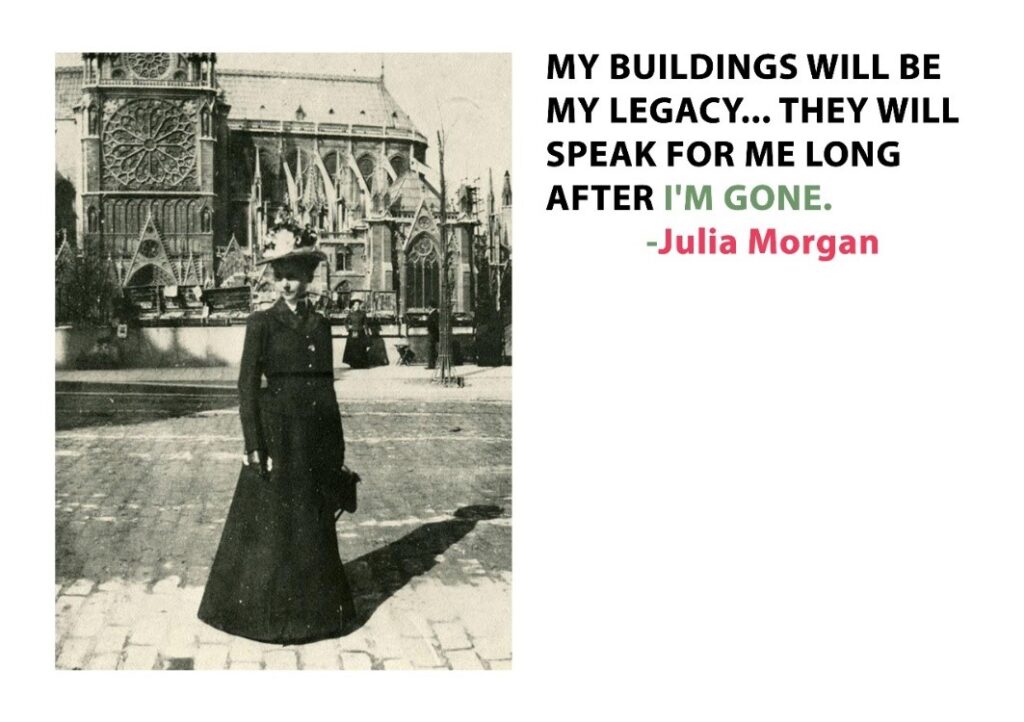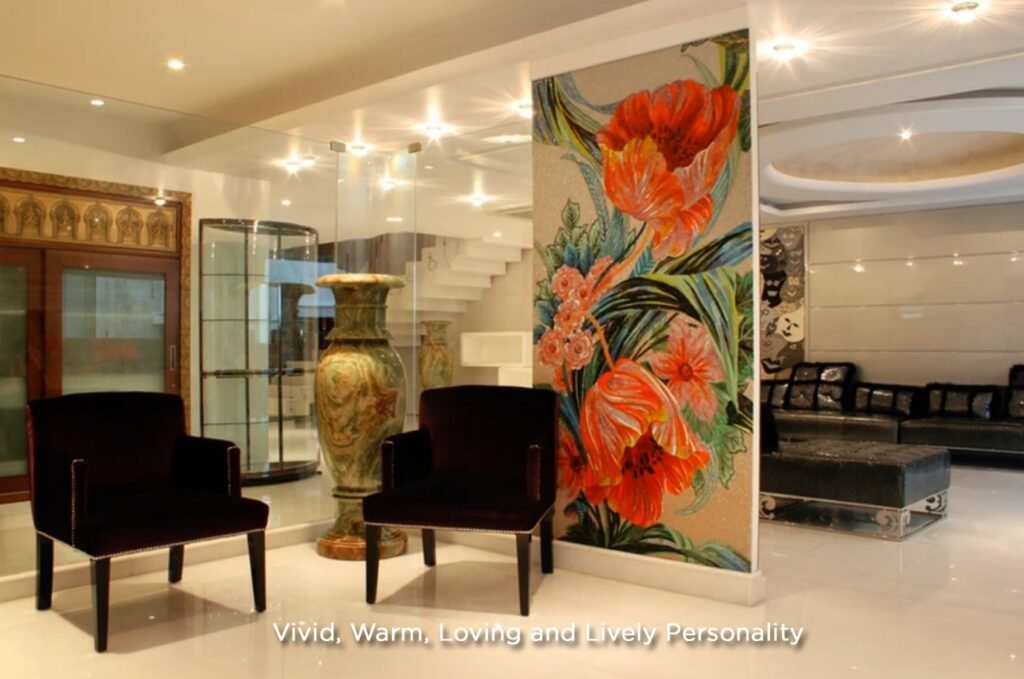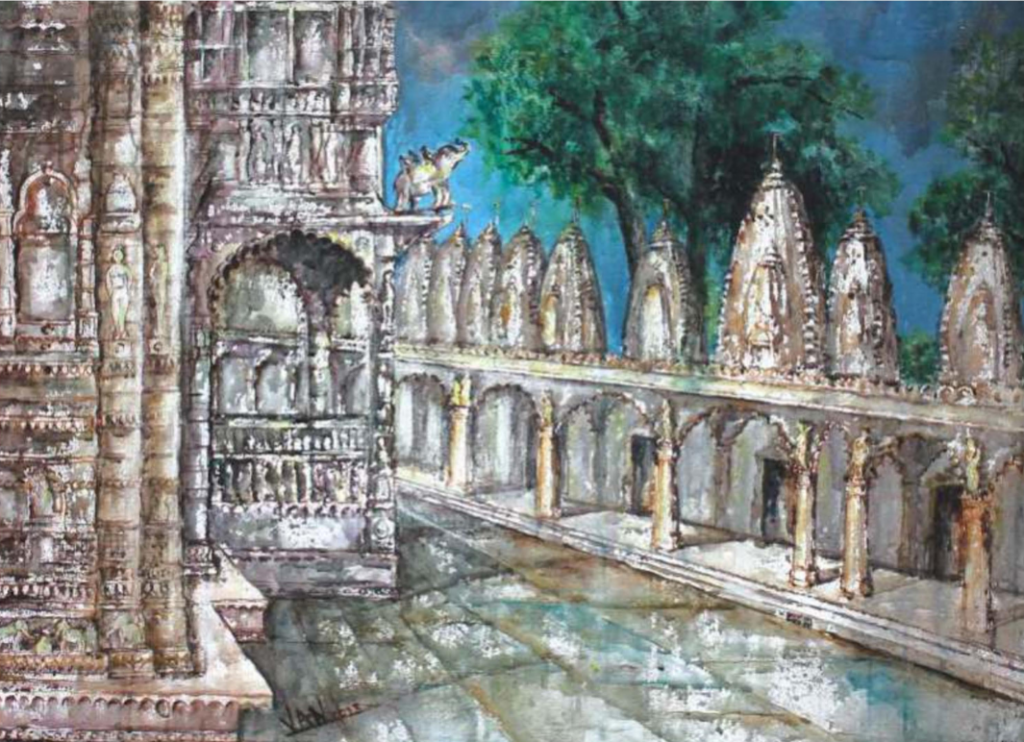~Julia Morgan Julia Morgan, the pioneering American architect, left an indelible mark on the world with her extraordinary buildings. Her famous quote, "My buildings will be my legacy… they will speak for me long after I’m gone," encapsulates the profound and lasting impact of her work. This blog post will delve into the essence of …
~Julia Morgan

Julia Morgan, the pioneering American architect, left an indelible mark on the world with her extraordinary buildings. Her famous quote, “My buildings will be my legacy… they will speak for me long after I’m gone,” encapsulates the profound and lasting impact of her work. This blog post will delve into the essence of this statement, exploring how Morgan’s architectural creations continue to resonate, tell her story, and inspire generations, far beyond her lifetime.
The Architect as Storyteller: Buildings as Narratives
At its core, Julia Morgan’s quote speaks to the power of architecture as a narrative medium. A building is not merely a structure of brick and mortar; it is a meticulously crafted space that embodies intentions, philosophies, and the spirit of its creator. For Morgan, each of her buildings was a chapter in her life’s story, a tangible manifestation of her intellect, artistic vision, and unwavering dedication.
Consider Hearst Castle, perhaps her most iconic project. This sprawling estate, perched atop La Cuesta Encantada overlooking the Pacific Ocean, is a symphony of architectural styles, a testament to Morgan’s unparalleled ability to synthesize diverse influences into a cohesive whole. From the opulent indoor Roman Pool to the majestic Neptune Pool, and from the intricate details of the Casa Grande to the charming guest houses, every element of Hearst Castle tells a story. It speaks of William Randolph Hearst’s grand ambitions, certainly, but more profoundly, it speaks of Julia Morgan’s incredible skill in translating those ambitions into a breathtaking reality. The sheer scale, the meticulous craftsmanship, and the harmonious integration of art and architecture within Hearst Castle all narrate Morgan’s mastery of her craft and her tireless pursuit of perfection.
Beyond the grandeur, her buildings also tell stories of their purpose. The numerous YWCA buildings she designed across California, for instance, speak of her commitment to social good and her understanding of how thoughtfully designed spaces could uplift communities. These buildings, often characterized by their practical yet elegant designs, provided safe and inspiring environments for women, reflecting Morgan’s belief in empowering them through accessible and well-designed facilities. They tell a story of her progressive ideals and her desire to contribute to a better society, one well-designed building at a time.
Durability and Timelessness: A Legacy Cast in Stone
One of the most literal interpretations of Morgan’s quote lies in the inherent durability and timelessness of architectural creations. Unlike many other art forms that may fade or deteriorate over time, well-built structures can stand for centuries, enduring the whims of changing trends and the tests of nature. Julia Morgan was renowned for her meticulous attention to structural integrity and her use of high-quality materials. She understood that for her buildings to “speak for her long after she’s gone,” they needed to be built to last.
Her engineering background, honed at the prestigious École des Beaux-Arts in Paris (where she was the first woman admitted to its architecture program), instilled in her a deep understanding of construction principles. This is evident in the earthquake-resistant designs she employed, particularly after the devastating 1906 San Francisco earthquake. Many of her buildings withstood subsequent tremors with remarkable resilience, a testament to her foresight and engineering prowess. This structural robustness ensures that her legacy is not merely preserved in photographs or blueprints, but in the enduring physical presence of her works.
The timeless appeal of her aesthetic also contributes to the longevity of her legacy. While she worked across various styles, from Arts and Crafts to Mediterranean Revival, her designs always possessed an inherent elegance and thoughtful functionality that transcends fleeting fads. Her ability to blend classical elements with contemporary needs, and to create spaces that felt both grand and welcoming, ensures that her buildings remain relevant and admired by successive generations. They do not feel dated; rather, they exude a sense of enduring beauty that continues to captivate.
Influence and Inspiration: A Silent Dialogue Across Generations
Julia Morgan’s buildings speak for her not just through their physical presence, but also through their ongoing influence and ability to inspire. For aspiring architects, historians, and art enthusiasts, her works serve as a masterclass in design, engineering, and the integration of diverse artistic disciplines.
Her pioneering role as a woman in a male-dominated profession is, in itself, a powerful message conveyed by her buildings. Each structure stands as a testament to her unwavering determination, her formidable talent, and her ability to break barriers and excel against formidable odds. For generations of women, her story and her tangible achievements have been a beacon of possibility, demonstrating that gender is no impediment to achieving greatness in any field. Her buildings, therefore, speak not only of architectural brilliance but also of perseverance, resilience, and the triumph of talent over societal constraints.
Architects studying her work gain insights into innovative structural solutions, masterful spatial planning, and the art of harmonizing diverse materials and details. Historians find in her buildings invaluable primary sources that illuminate the social, cultural, and technological trends of her era. Art lovers are moved by the beauty, craftsmanship, and the sheer artistic vision embedded within every facade, every interior, and every landscape she shaped.
The ongoing preservation efforts surrounding her buildings further amplify their voice. Organizations dedicated to maintaining and interpreting her works ensure that future generations can experience these structures firsthand, allowing them to continue their silent dialogue with new audiences. When someone walks through the grand halls of the Asilomar Conference Grounds or marvels at the intricate details of the Hacienda at Milpitas, they are, in essence, engaging in a conversation with Julia Morgan herself, experiencing her vision directly.
The Echo of a Quiet Genius: Personality Reflected in Stone
Julia Morgan was known for her quiet, unassuming demeanor, a stark contrast to the often flamboyant personalities associated with artistic genius. Yet, her personality, her values, and her approach to life are deeply embedded in her architectural creations.
Her pragmatism and meticulous attention to detail are evident in the functional efficiency of her designs. She wasn’t just interested in aesthetics; she was deeply concerned with how a building would be used, how it would function for its occupants, and how it would stand the test of time. This practical wisdom speaks volumes about her grounded nature and her commitment to delivering enduring value.
Her humility is also subtly woven into her work. While her buildings are grand and impressive, they often possess a sense of understated elegance rather than ostentatious display. She allowed the materials, the craftsmanship, and the inherent beauty of the design to speak for themselves, rather than imposing a singular, overt “signature” style. This reflects a selfless dedication to the project itself, rather than to personal aggrandizement.
Moreover, her deep respect for history and craftsmanship is palpable in her sensitive restorations and her incorporation of historical elements. She didn’t seek to erase the past but to build upon it, integrating new structures seamlessly with existing landscapes and architectural traditions. This reverence for what came before, combined with her forward-thinking approach, speaks of a profound understanding of continuity and the interconnectedness of time.
The Enduring Legacy: More Than Just Buildings
Ultimately, Julia Morgan’s quote “My buildings will be my legacy… they will speak for me long after I’m gone” transcends the literal meaning of physical structures. It speaks to the idea that true legacy is not just about what one accomplishes but about the values, the vision, and the impact one leaves on the world.
Her legacy is not merely the sum of her completed projects; it is the embodiment of her pioneering spirit, her unwavering dedication to excellence, her commitment to social betterment, and her profound understanding of the human need for well-designed, inspiring spaces. Her buildings are the tangible expressions of these intangible qualities. They are the conduits through which her genius continues to communicate, her values continue to resonate, and her influence continues to shape the built environment and inspire those who engage with it.
Even today, when we encounter a Julia Morgan building, we are not just looking at an old structure. We are witnessing a dialogue between the past and the present, a testament to the power of human ingenuity, and a silent but eloquent declaration from a woman who built not just buildings, but a lasting and living legacy. Her buildings do indeed speak for her, and their whispers of artistry, engineering, and vision will continue to echo for centuries to come.






